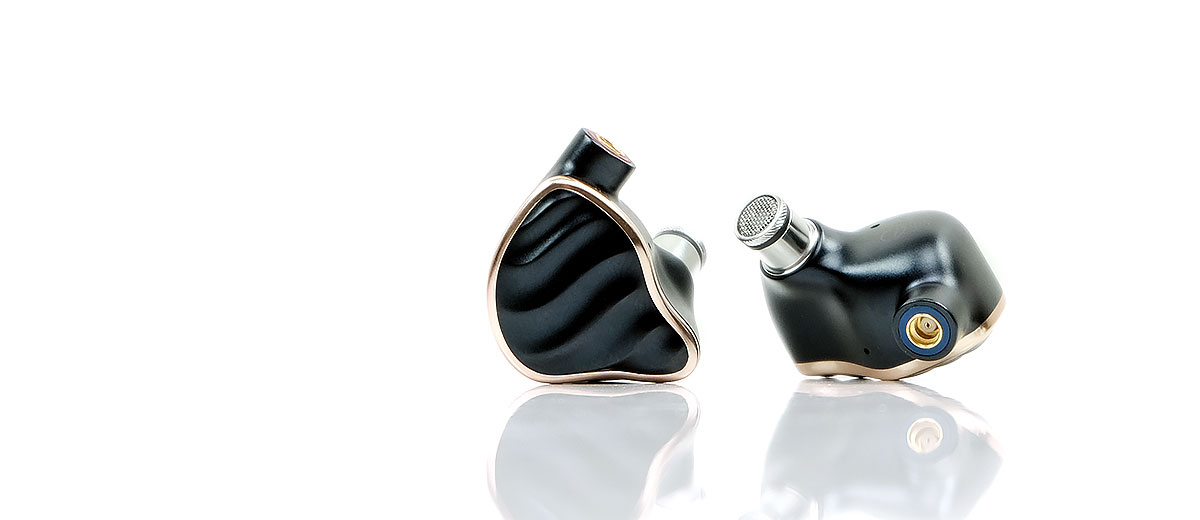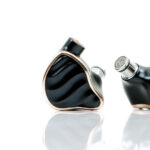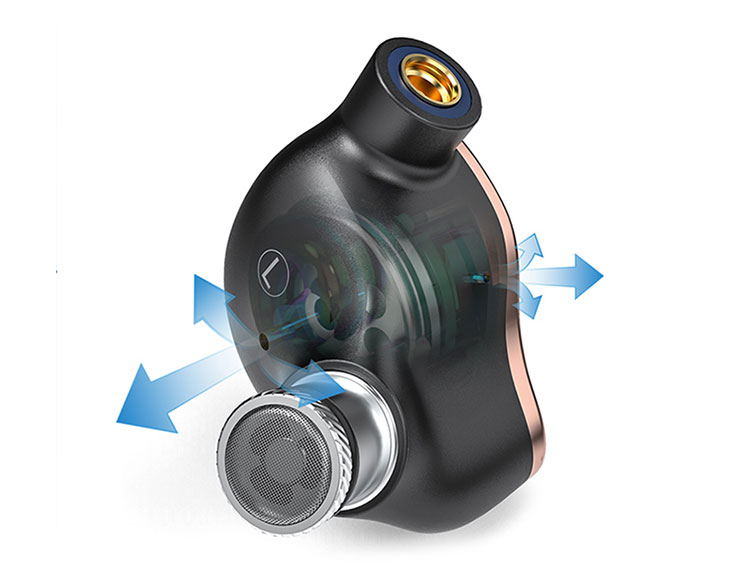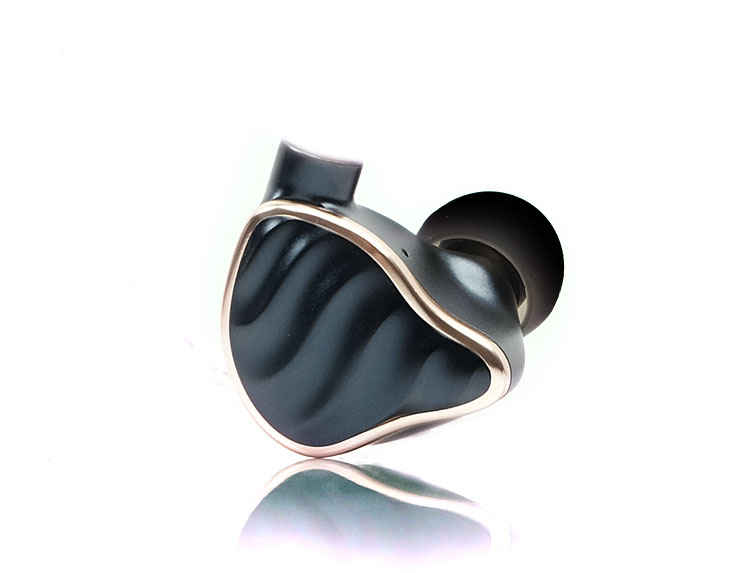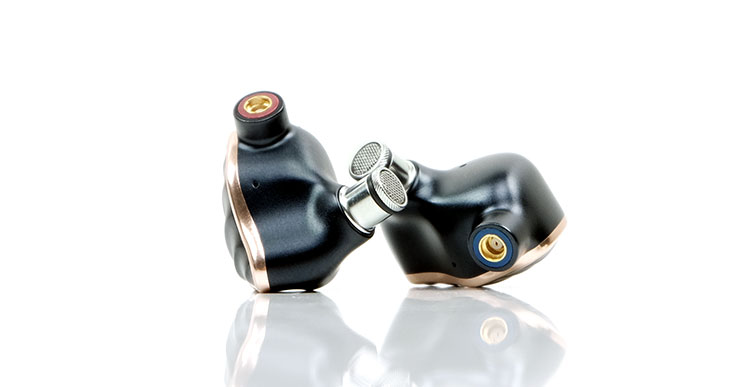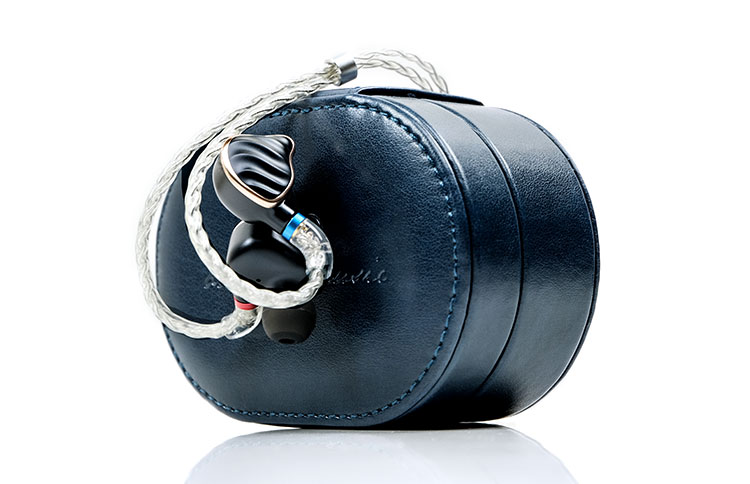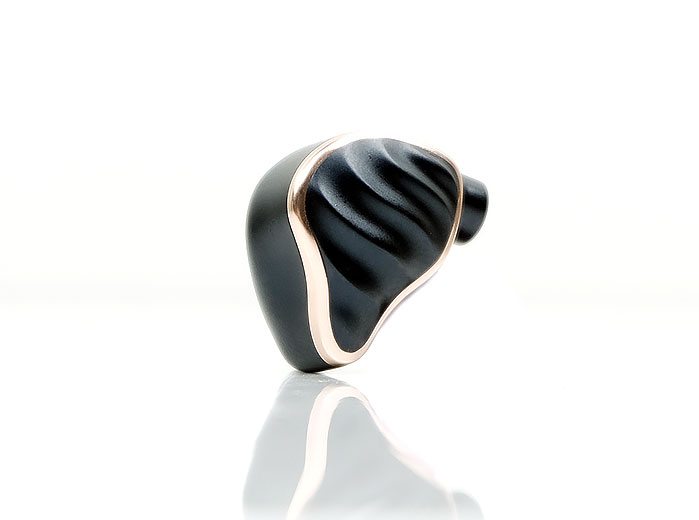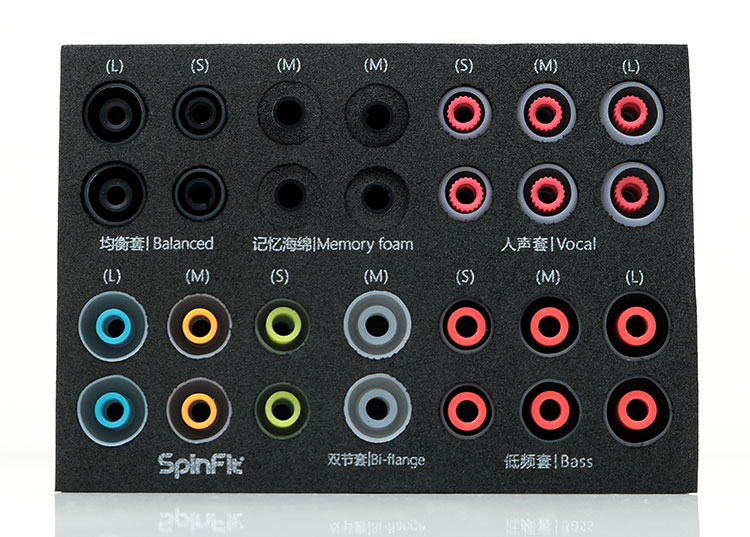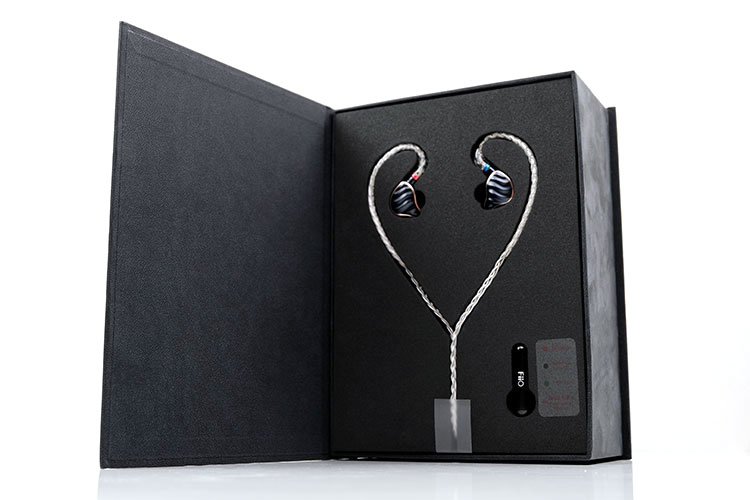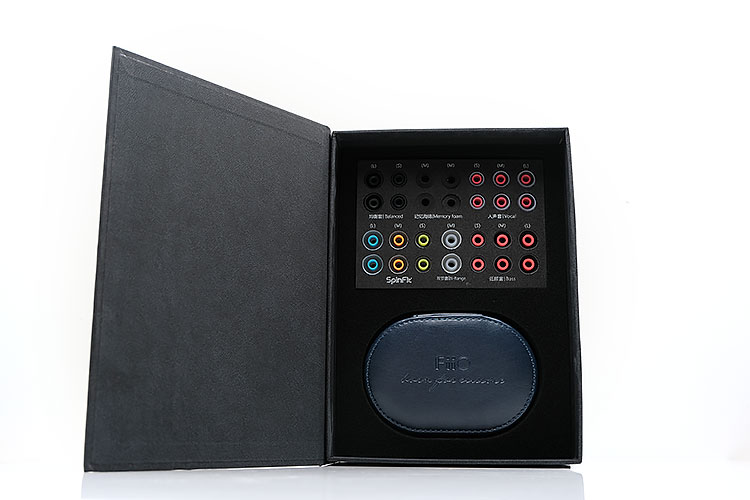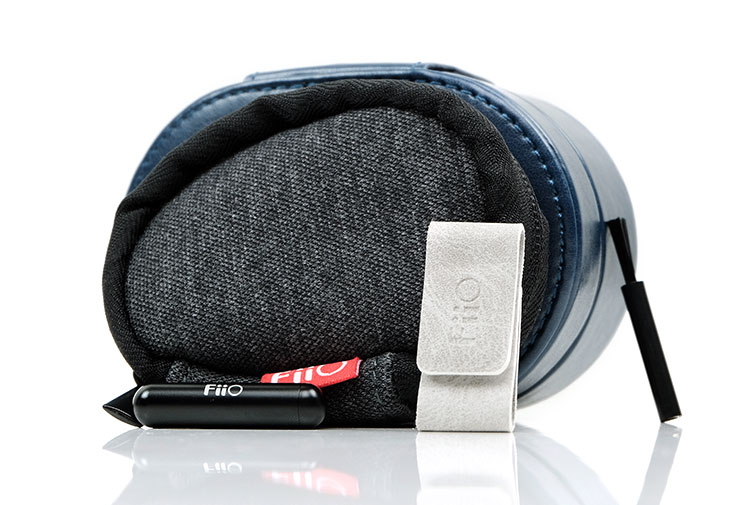The FiiO FH7 is the company’s top-of-the-line hybrid universal monitor featuring a single dynamic driver and 4 BA drivers. It is priced at $449.99.
Disclaimer: The FiiO FH7 sent to us is a sample in exchange for our honest opinion. We thank FiiO for this opportunity.
To learn more about FiiO reviews on Headfonics you can click here.
Note, this 2-page review follows our new scoring guidelines for 2020 which you can read up on here.
It is not that FiiO has never done an IEM before. Rather, the recent ones are getting to be really good, noteworthy, and beyond the generic “Chifi” terminology that often you have seen thrown around of late.
The F5 and F9 series IEMs were really showing potential without too much risk. Quite popular in markets where $50-99 is a big enough risk but in the main markets still a ‘toe in water’ style entry.
However, with the launch of the FH5 last year and recently the FA7, FiiO really seems to mean business, but business FiiO style. What does a ‘FiiO style’ mean? It means value, not always cheap, but getting plenty for the asking price.
In this case, it is their flagship 5-driver hybrid universal monitor, the FH7 priced at $449.99, and yup, it could well be a ‘bang for the buck’ king sub $500 because the value is off the hook!
Tech Inside
Driver Configuration
The FH7 uses a combination of 5 drivers in a hybrid build. FiiO has been rather transparent on their website as to what exactly they are using inside the FH7 for these particular drivers.
For the dynamic driver, they have opted to use a fairly hefty beryllium-coated 13.6mm dynamic driver and for the BA drivers, FiiO has opted for a mix of a single Knowles DFK and dual balanced armature driver SWFK-31736.
Note this is a coated or plated driver and not a pure beryllium variant such as you would find on the Periodic Audio Be single dynamic monitor.
Also, FiiO does not mention their crossover technology in the spec sheet in huge detail so I am presuming this is a 3-way passive crossover build with grouping using the dynamic driver for the lows, a midrange dual-driver DFK for the mids, and the dual-driver SWFK-31736 as tweeters or for the highs.
S.TURBO V2.0
FiiO also makes mention of their tube technology specifically optimized for the larger beryllium dynamic driver, S.TURBO V2.0. From what I am being told, these are specifically elongated acoustically design bores or tubes to enhance the level of detail in the low-end response of the FH7’s dynamic driver.
Dual Venting
There also seems to be a play for pressure relief aspects to the design which is something I am deeply in favor of to protect your hearing.
Whilst not as complex as the apex™ modules from 64 Audio or ADEL, what FiiO has done is to insert a dual bass port venting system both front and rear of the main body to take out a little of that pressure build-up from sound waves (pneumatic pressure).
Anyone using these on a plane might just benefit from the effects of that when the cabin pressure changes. I tend to take 64 Audio apex monitors on flights for that very reason.
Filters
Finally, the tried and tested filter magic that a lot of companies like to dabble with now and then. FiiO has introduced an integrated threaded nozzle filter system and thrown in 3 filters for bass, reference, and treble adjustments to your tuning preferences with the FH7.
Design
If you are familiar with the overall design and shape of the FH5, then the FH7 is rather similar. That is not to say they are the exact same, the FH7 does have some changes. However, from afar the shared aesthetic is hard to miss.
The dimensions also look marginally deeper and wider on the FH7 compared to the FH5, presumably to fit into the additional BA drivers and the larger dynamic driver.
Like the FH5, the FH7 is designed with a strong reference to water ripple or wave effect. However, this time, the ripple is horizontal rather than vertical on the faceplate. It also looks more complete or continuous to me and not as boxy as the FH5 ripple design.
The two specific design changes center on the MMCX connector shape and finishing and the nozzle design. The FH7 nozzle is marginally longer with a silvery chrome finish as well as designed to accommodate the new filter system.
The MMCX connectors are now on an elongated external stem as opposed to being embedded into the main body of the shell on the FH5. I suspect the space requirement internally with the additional girth of the driver build may have necessitated the MMCX being moved further out of the shell.
However, it also pushes the cable away from pressing on the outer ear which may be more comfortable for some.
Finishing
All 3 components of the FH7 shells are machined from a CNC aluminum-magnesium alloy just as you will find on the FH5. The body and faceplate are given the same sandblasted and anodized titanium finish as the FH5.
However, the toning is a black tone rather than grey so you can easily differentiate between the two. Only the divider plate, nozzle, and MMCX connectors differ in the finish of the FH7.
The divider plate has a gold color that acts as a design accent contrast to the black monotone finish of the FH7 body. The MMCX connectors still have that small blue and red outer ring of the FH5 with duplicate colored rings on the cable connectors for easy matching.
Cable(s)
As with the FH5, FiiO is sticking with the MMCX connector system but the 1.2m cable itself looks like it has had a bit of an upgrade. Not the wire inside though which remains a Litz Monocrystalline SPC.
However, it seems we have gone up to an 8 core 152 strand geometry, a supplier braided translucent jacket finish, and a much flashier silvery aesthetic than the darker stiffer TPU coated FH5 stock cable.
This is a light cable with virtually no memory retention and handles much better than the FH5 stock cable despite the FH5 cable seemingly being a little smaller. It is also dead quiet for microphonics and the memory hooks seem more plaint than before.
The cable is terminated with an anodized right-angle 3.5mm TRSS jack with excellent strain relief. The lightweight and small y-split barrel are similarly finished with a detachable chin cinch.
On a physical level, I am quite impressed with this cable but like the FH5 cable, it does not come terminated with a balanced TRRS jack. I would love to see it balanced as stock with an adaptor in the box for 4.4mm or 3.5mm.
Comfort & Fit
Coming from the FH5, the FH7 has a similar quasi “custom universal” shaping to its aluminum body for a comfier fit in the outer ear. However, the fit is just marginally better for a couple of reasons. The first is the slightly longer nozzle allows for a deeper insertion of the FH7 into the ear canal resulting in a better seal with similar tips tested.
The second is the MMCX stem on the FH7. The flush FH5 fitting seems to drag the cable a little more into the ear and presses against it more, at least for me. With the FH7 stem, (and slightly taller body) the cable feels further away from the ear offering a more comfortable experience.
Tips
The quality and variety of tips supplied by FiiO for the FH7 are excellent. More so that, like the FH5, they are all labeled in terms of what they focus on for the single-bore silicone tips such as balanced, vocal, and bass.
The bass tips I will not comment on too much since even the largest one I had trouble getting a great seal. I am not 100% sure I was getting as much low-end power as I had anticipated.
I did get more bass than the vocal tips but the vocal tips turned out to be my preferred between these two for the level of seal and comfort they offered. However, the presentation from the vocal tips was a bit off in the treble timbre sounding a bit peaky at times.
You also get a couple of memory foam medium-sized tips which nearly always thicken the timbre, weighted the low-end, and relaxed the treble.
There is also a single set of bi-flange in there that come quite close to the level of seal the foams offer and are just a bit better for comfort. However, the tonal response from the FH7 using the bi-flange tips sounded too bass light and bright for my tastes.
The final set is a set of SpinFits s/m/l which, whilst not providing a lot of seal, do offer a distinct musical high contrast presentation compared to the more muted balanced tips for example. I tended to use these along with the foams and balanced single-bore silicone tips for the majority of my testing.
Isolation
One thing to note is the level of isolation is impaired slightly by the dual venting. That is normal really for any vented IEM. You can improve it with the memory foam tips supplied which offer the highest level of isolation out of all the tips but it is still not quite up to par with all BA Builds such as the FA7, (which also has a more aggressive custom universal design).
Filters
FiiO has supplied a set of filters with the FH7, 3 pairs in total, all neatly arranged and packed inside a suppository small black branded metal tube. Each pair is color and designated as follows:
- Red – Dynamic bass emphasis
- Black – Balanced or Reference
- Green – Detailed treble emphasis
You can check on page 2 for our sound impressions of each but for now, they are dead simple in terms of application. Simply slip off the tip, unscrew the top of the nozzle take off the filter, and change for a different one then put the tip back on. Takes about 1 minute. For your reference, the black filters are fitted on the FH7 out of the box.
Accessories & Packaging
Awesome packaging and plenty of accessories, but then it is FiiO and they do this very well indeed with their higher-end product offerings. The retail packaging is much like the FH5 with a black understated outer and a twin foam tray organizer inside.
The top-level is laid out the same as the FH5 with the drivers and cable. However, there is an additional insert for the filter metal tube and a small printed label explaining what each one is.
Underneath, on layer two, you get the expansive foam tip tray. Below the tray, there is also a new type of case from FiiO and a step away from the older plastic hard case seen on the FH5 and FA7. This is a fairly deep faux-leather oval blue case with plenty of space for the cable and drivers. There is also a little mesh on the lid to holds some tips and the filters.
Beyond that, you get the smaller softer zip pouch for pocketability. This is the same cushioned soft pouch you get with the FH5 and FH7. You also get a cleaning brush and a small magnetic IEM cable organizer clip in an off-white color.
Click on Page 2 below for Sound Impressions & Comparisons

